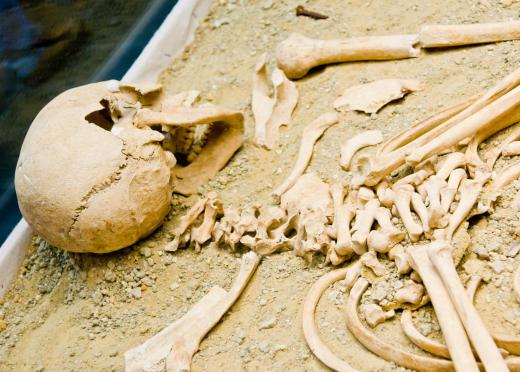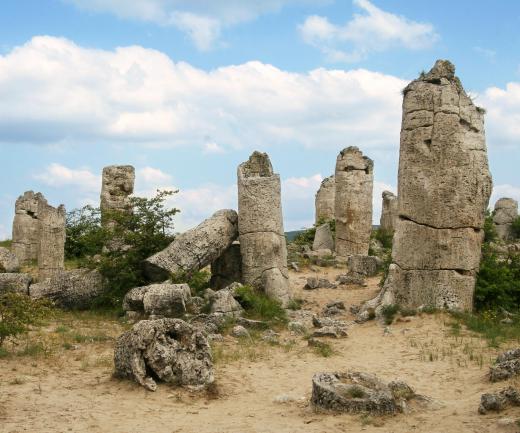What is Bioarchaeology?
 Mary McMahon
Mary McMahon
The term “bioarchaeology” is used in several different ways in an academic context. In most of the world, it refers to the study of any biological remains found at archaeological sites, from the bones of animals cooked for dinner to the plant fibers used to make clothing. In the United States, the term is used to refer specifically to the study of ancient human remains, which may be called osteoarchaeology or paleo-osteology in other regions of the world.
A great deal of information can be gleaned from the study of biological remains at archaeological sites, and from the study of human remains in particular. Studying the plants and animals people used, lived with, and interacted with can provide information about their societies which may be quite valuable. On a basic level, bioarchaeology can be used to gather data about what the climate was like when the ancient culture being studied was thriving, and to collect material which can be used to study the genetics of plants, animals, and human societies.

Studying human remains in particular can provide information about the culture in which those humans lived. Bioarchaeology studies can be used to look for diseases which might have been present in the population, and to study the general health of the population. Large groups of human remains can also provide information about how long people lived, as a general rule, and to study the environment in which they lived. Bones bear environmental and occupational markers which can be very valuable to people studying ancient societies.

The approach to bioarchaeology varies, depending on nation and researcher. In the United States, the study of human remains is controversial, with some Native Americans preferring that human remains not be disturbed, although they respect the desire to want to learn more about ancient cultures. In places like Europe, the focus historically was primarily on artifacts made by members of ancient societies, such as works of art, with interest in human remains and biological materials being a more recent development.

Bioarchaeologists can work in the field, supervising and participating in excavations. A specialist in bioarchaeology can also work in a lab, analyzing samples collected in the field and preparing for publication, or could work as a curator in a facility which stores and displays items of significance. They may also work for agencies which oversee archaeological activities, including repatriation of remains and the granting of permits to researchers who want to work at historic sites.
AS FEATURED ON:
AS FEATURED ON:













Discussion Comments
@JaneAir - That show sounds interesting, I think I might check it out. I took anthropology in college and we didn't get to identify any remains! I took cultural anthropology though, which I feel certain is different than forensic anthropology.
I think bioarchaeology sounds really interesting. I bet we could probably learn a lot more about ancient cultures from studying bones than artifacts. Bones can tell us things for certain like what kind of environment the person lived in and what they did during daily life.
I'm really glad this field has risen in popularity in the last few years!
This article totally reminded me of the TV show "Bones" and the main character, Dr. Brennan. She's a forensic anthropologist and she studies human remains to solve crimes.
However, part of her job is to also study "older" sets of bones too. One episode featured her identifying remains of unidentified soldiers from World War II. Another showed her in the jungle studying ancient remains to learn about an ancient culturs. It sounds like the jobs of a forensic anthropologist and a bioarchaelogist aren't all that different!
@pennywell - Just wanted to add my two cents as well. Many students make the mistake of thinking that they'll be full-fledged bioarchaeologists as soon as they graduate. In truth, it's a pretty long road and at the beginning typical jobs in this field are research, technician, or assistant positions.
Even later on, keep in mind that it's not all fun field work. A good chunk of the job is writing and publishing research papers and talking at conferences to share findings and theories.
@pennywell - That's a good question! You would normally need a PhD or at least a Master's in archaeology and/or anthro, unless the university offers a specific bioarchaeology degree. Apart from the numerous papers that these students would have to write, it is also typically expected that they would do field research.
Bioarchaeology sounds fascinating but how does one get started in that field? What education and training would you need?
Post your comments